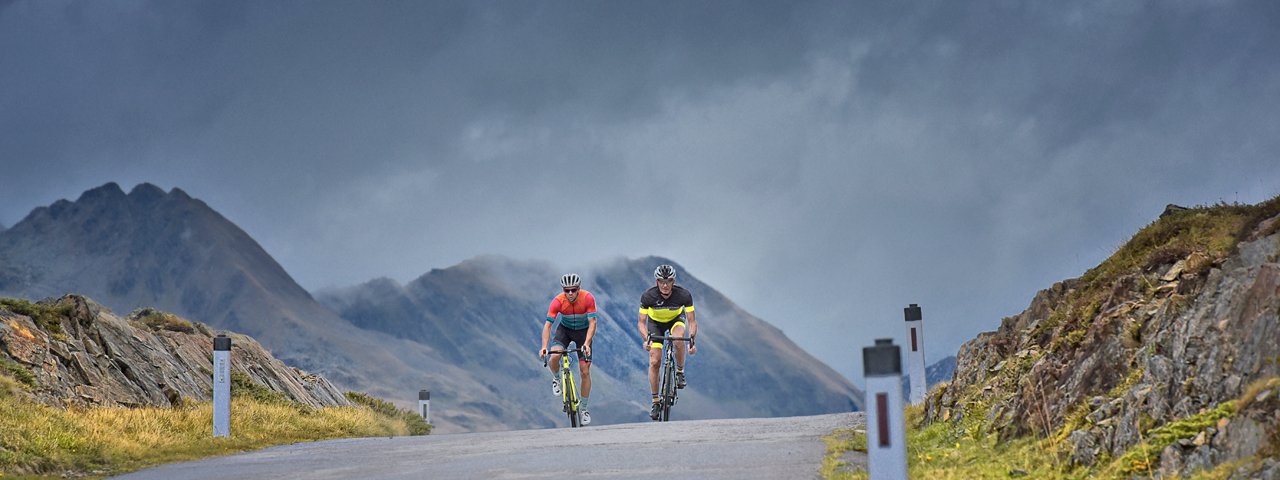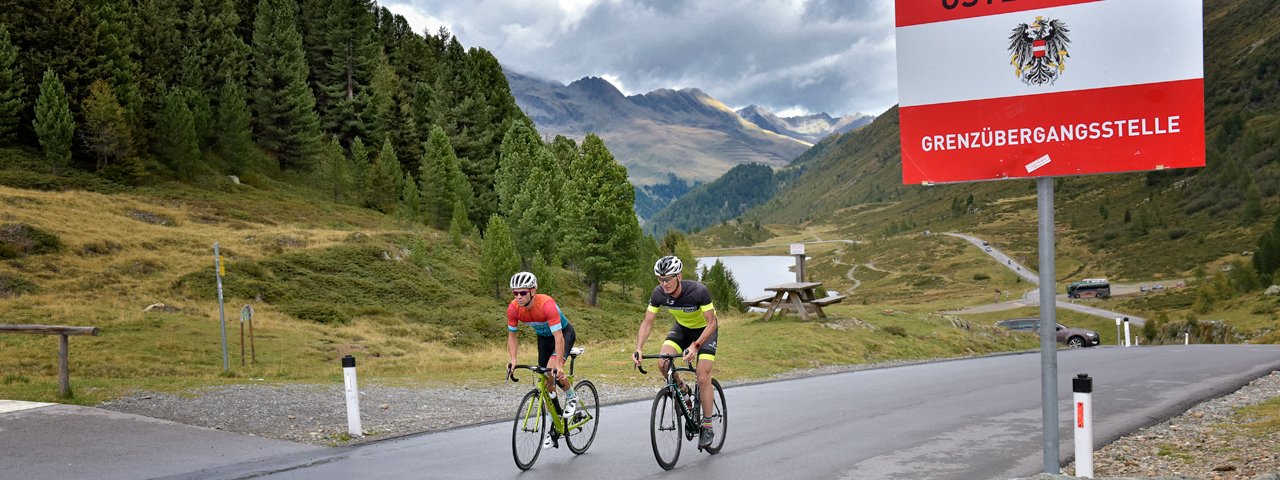When they hear "East Tirol", most people think of mountaineering, skiing and mountain biking. However, this charming region on the border to Italy is also a very interesting destination for roadbike riders. Famous bike races such as the Giro d’Italia, the Tour of the Alps and the Tour of Austria have all visited East Tirol on several occasions. Comprising 140 kilometres and 2,265 vertical metres of climbing, culminating in the climb of the Staller Sattel (2,052m), this ride is a challenge even for experienced cyclists. The reward for all that hard work are fabulous views of the Villgratner Mountains and a thrilling descent through the Antholzertal, past the famous cross-country skiing centre and the towering 3,000m giants of the Rieserferner Massif.



Roadbike Ride
Starting point
Sillian
Finishing point
Sillian
Mountain chain
Villgraten Mountains
Length
139.4 km
Riding time
7h
Features
- Circular route
- Handicap-accessible
- Route with e-bike charging station
Difficulty rating
difficult
Altitude
Elevation uphill 2,265m
Vertical metres downhill 2,265m
Fitness level
Best time of year
* These are approximate values and recommendations. Please take your personal fitness level, technical ability and the current weather conditions into account. Tirol Werbung cannot guarantee that the information provided is correct and accepts no liability.
Downloads
Trail description
This ride begins in Sillian and leads along the B100 gently downhill through the Pustertal Valley down to Lienz, the largest town in East Tirol. In Lienz you switch to the "Felbertauern Bundesstraße" (B108) heading towards Matrei and climb via Ainet and St. Johann im Walde to Huben.
Here the route turns off left onto the "Defereggental-Landesstraße" (L25) and the challenging climb to the Staller Sattel begins. Along a 35km stretch riders must overcome 1,270 vertical metres and sections of up to 12%, though the traditional wooden houses and beautiful nature of the Defereggental Valley provide plenty of welcome distraction.
After a tough section at the start, riders reach a plateau where the gradient eases. After passing Hopfgarten there is a open-sided tunnel and then a closes-sided tunnel to negotiate. We recommend that riders have a rear light on their bikes when riding these sections.
After reaching St. Jakob it is time to descend to Erlsbach on the valley floor. Here things get really steep as riders wind their way up to the Obersee lake at 2,052m and finally reach the Staller Sattel, the highest point of the day. The nearby Staller Alm hut is a good place for a well-deserved snack and drink.
It is up here in the high mountains that riders cross over from Austria into Italy. On the Italian side the first section of the road is only wide enough for one car, so a traffic lights system has been installed to prevent accidents. Cyclists are only permitted to use the road for 15 minutes each hour, starting on the full hour.
Passing the Antholzer See lake (1,642 metres), whose water reflects the many 3,000-metre peaks of the Rieserferner Massif, riders whizz past the famous biathlon centre. Here the road becomes rider and invites riders to pick up the pace on the descent to Niederrasen.
Near Olang the route merges with the SS49, which soon takes riders to Welsberg, Niederdorf and finally Toblach. Continue on this road to Innichen with its pretty church and down to the Austrian/Italian border before reaching Sillian, the starting point of the ride.
Variantion: Between Toblach and Lienz there is the Drau Cycle Path and between Lienz and Huben there is the Isel Cyle Path. However, be aware that both these can be very busy with families and groups.
Tip! Those looking for more climbing can turn off left at Abfaltersbach and take on the Pustertaler Höhenstraße leading through Anras, Vergein, Kosten, Assling and Bannberg back down to Leisach, where riders rejoin the B100. This 30km section adds around 840 vertical metres and has gradients of up to 17%.




